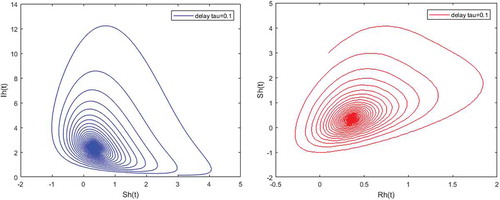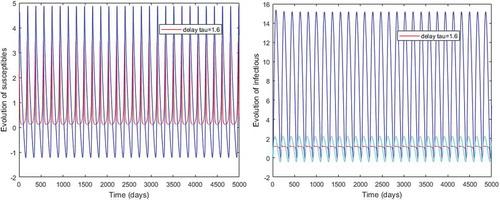Figures & data
Figure 1. The dashed arrows indicate the direction of the infection and the solid arrows represent the transition from one class to another.
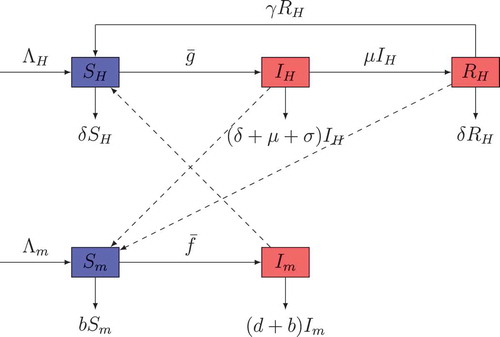
Figure 2. Density of infected mosquitoes and infected humans when, ,
,
,
,
,
,
,
,
,
and
and
respectively for the sub-figures (a) and (b).
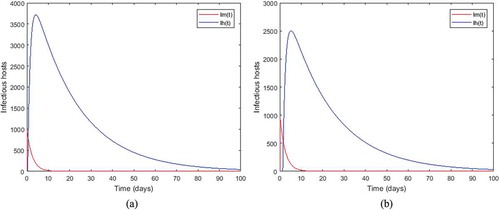
Figure 5. Density of infected mosquitoes versus susceptible mosquitoes; and susceptible mosquitoes versus infected mosquitoes when and
,
,
,
,
,
,
,
,
,
.
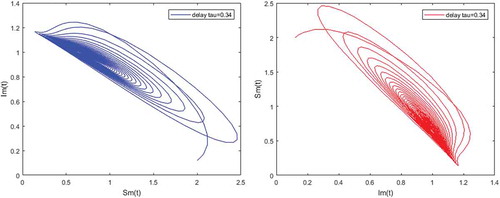
Figure 6. Density of infected humans versus susceptible humans; and susceptible humans versus partially immune individuals when and
,
,
,
,
,
,
,
,
,
.
